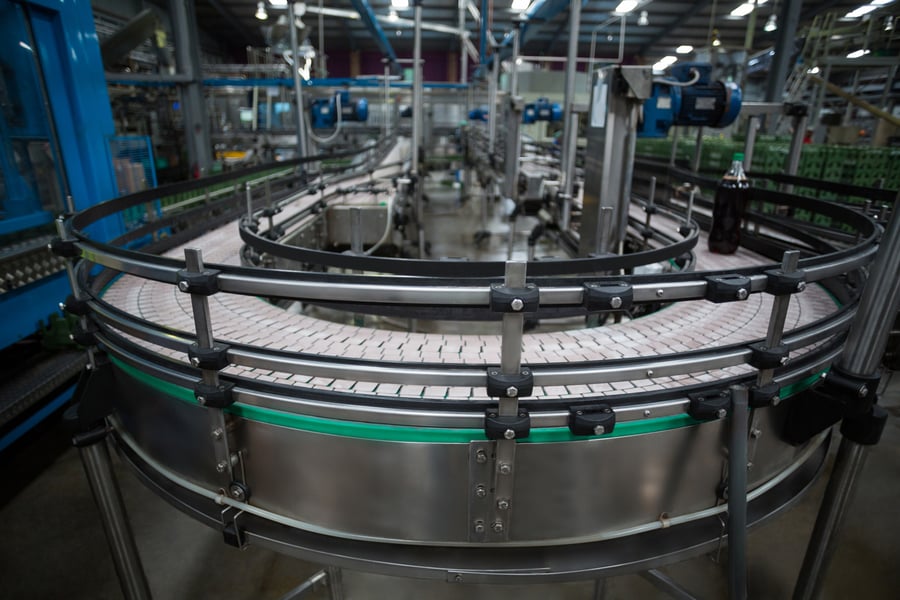Bottlenecks, inefficient stops and starts and under-utilised conveyors are all fire-engine red signs of ineffective line balance and control. These are also obvious OEE losses.
Other signs of poor line control aren’t as easy to spot but can be just as detrimental to performance.
To keep your machines running optimally, it’s important to be able to diagnose a poorly balanced line vs. an optimised one. Top-line OEE alone though, isn’t enough to make these determinations.

As explained in Industry Week:
“OEE is most effective when used as a strategic or overarching metric, coupled with drill downs into each of its components of availability, efficiency, and quality. In seeking to optimize each of these areas, manufacturing operations need to balance production schedules with time, cost and machine-availability constraints.”
This is especially true for line control, where series of short stops and starts can result in micro-losses of downtime, which can be prevented with downtime tracking software, and speed loss.
How to diagnose poor line control
The surest way to diagnose poor line control is an opportunity audit to systematically diagnose opportunities for line improvement. An opportunity audit is an invaluable tool to set a baseline for your line control effectiveness and better understand the size of opportunity.
That said, qualitative checks can also be made in-house. Walk the line and identify issues which could be symptoms of poor line control. We recommend starting at your critical machine and subsequently spending at least twenty minutes on each machine, noting the state of them and the conveyors both before and after.
While performing these checks, watch for the following symptoms of poor control:
1. Operators manually stopping machines
- Try to figure out when they're taking over the automatic controls.
- Is it in buildback? Lack? This can be a sign that your current controls are not set correctly.
2. Workers adjusting speed
- If they're slowing machines down, this could be covering up deeper issues that are critically affecting equipment.
- And, if one machine's state is changed, then the whole Production Line Balancing and Optimisation theory is thrown off track.
3. Machines are stopped while product is still moving
- How long does it take for the machine to get up and running?
- If product is still on the infeed, productivity can plummet.
- How much time does it take for an operator to start things up?
4. How are sensors being used
- If sensors are being adapted or turned off, that's a sign of poor control.
- Operators sometimes 'rig' sensors to get better performance where they can and gain more control.
5. Conveyor usage
- During stable, normal running conditions, conveyors should be as empty ad possible to be better prepared in the case of a stoppage.
6. Frequency of speed changes
- It's expected that, in stable running, there should be minimal changes and all machines working at a steady speed.
7. Rated vs. actual speeds
- Focusing on the critical machine, any decrease in actual speed compared to rated speed is a negative
- This directly affects your performance, so examine how quickly the critical machine gets back up to full, rated speed after a stop to determine the state.
Keeping these symptoms in mind, it’s also important to look at the type of controls being used but before you start adjusting your line control, it's worth carrying out an audit of your line to identify what your potential opportunity is.

Should you run in automatic or manual? Or a combination of both?
In this context, an optimised line should ensure that things are running in full-automatic mode as often as possible with the least amount of stops and interventions as possible.
In essence, running in automatic mode means speed is pre-configured and rarely altered. Machines start and stop dynamically, coordinated by sensors. This sets up a basis for perfect flow, something that would be almost impossible if operators continually take over control.
Running under manual controls makes it incredibly difficult to optimise the line. Humans simply can’t react reflexively like sensors/automatic settings can.
Manual controls should only be used with analogue and digital speed controls, when there’s a manual stop or override situations.
Want to learn more?
Sign up for the Line Balance Optimisation (LBO) Crash Course. A 7-part series, our course outlines the optimal automatic configurations and provides practical advice to optimise your line balance.

